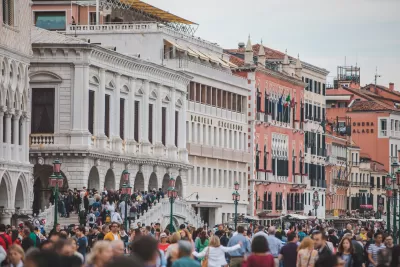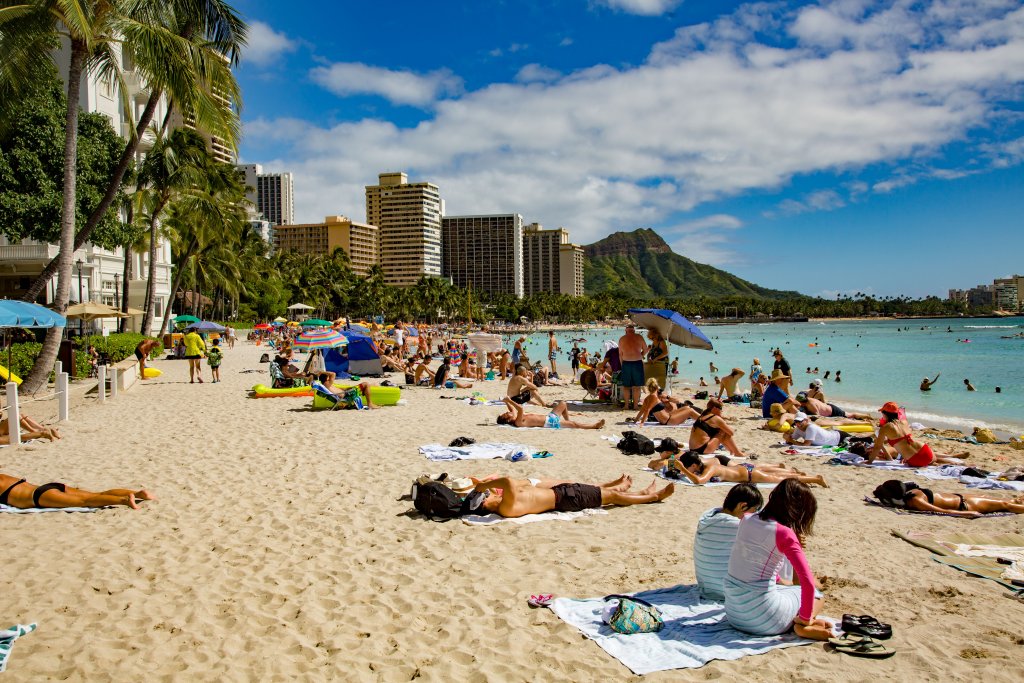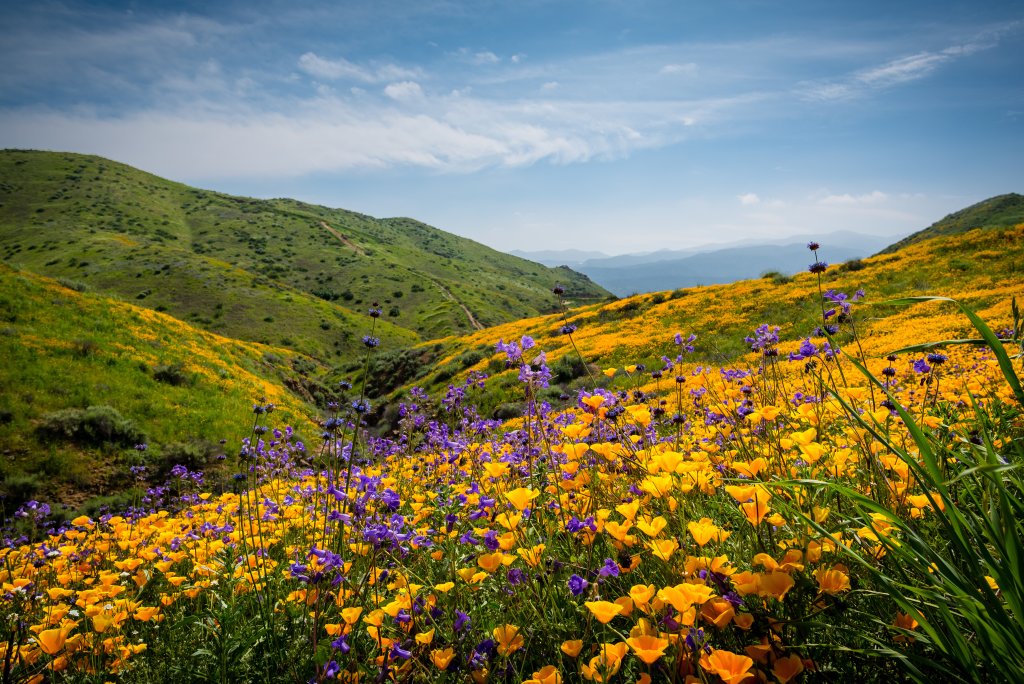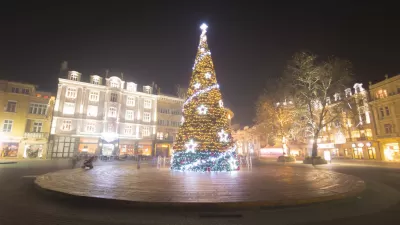Popular travel destinations across the world are facing a huge challenge as international tourism surpasses pre-pandemic levels: too many visitors. But what’s driving this troublesome trend?

This two-part blog series will take you on a tour around the world to explore what is driving mass tourism in a small number of destinations (part 1) and the policies those places have put in place to address the challenges that come with an excess of visitors (part 2).
Summer and vacation season is fast-approaching. Many travel destinations around the world eagerly await the influx of tourists and the dollars they spend. Others, well, hope a majority of travelers give their locales a miss this year.
International tourism has drastically increased over the past few decades, more than doubling between 2000 and 2020, according to Our World in Data. Though it dropped during pandemic lockdowns and travel restrictions, UN Tourism projects it will reach, if not surpass, pre-pandemic levels in 2024.
At face value, the upward trend in travel looks bright for the global economy and a much-welcomed signal of a “return to normal,” but the influx of large crowds left many destinations feeling the strain, even before the onset of the pandemic.
Having grown up in a small rural town that was heavily dependent on tourism revenue at the time — (Shout out to Dresden, Ohio, home of the world’s largest woven basket, near and created by the same company that built the weird basket-shaped office building that you may have seen photos of floating around on social media) — I’ve always been fascinated at the tightrope local elected officials and city staff must walk, catering to the needs, expectations, and behaviors of visitors while also maintaining a safe, thriving community for full-time residents.
Because let’s be honest: Tourists can be downright annoying. They do a lot of things besides spending money—and not all of those activities are desirable. This isn’t anything new, but the fact that there are so many more of them has multiplied the once occasional annoyances into significant nuisance and safety issues, stress on infrastructure (including housing and roads), environmental impacts, and a general overall decline in quality of life for local residents.
When it gets to the point that these negative effects aren’t worth the additional revenue, that’s when it crosses the line into “overtourism.” Many cities are starting to take action, including most recently Milan banning takeaway food after midnight in the city’s most popular nightlife districts and multiple cities increasing restrictions on short-term vacation rentals.
I’ll get more into how cities are pushing back in part 2 of this blog series. But first, I’d like to explore the forces that are driving these record-breaking swaths of travelers to a limited number of destinations.
5 drivers of overtourism
Increased air connectivity over the last twenty years or so has opened international travel for more travelers than ever before, according to UN Travel. But in addition to an overall increased ability to travel, I’ve noticed five key drivers that seem (at least to me) to be inspiring the masses of people to travel to the same locations.

1. Historic bucket-list destinations
The desire to travel to beach paradises or experience antiquity is one of the most traditional motivations for travel. It comes as no surprise that visitors, particularly Americans, where ‘historic’ is considered anything that’s been around more than 100 years – and boosted by the strong dollar – are particularly flocking to European cities with centuries of history like Athens (birthplace of Western democracy), Venice (known for its gondola-filled canals and picturesque architecture), and Paris (hub of arts and culture). But these cities and others throughout Europe are beginning to see that being on everyone’s travel bucket list comes with a price. The same is true with tropical locations like Hawaii and Bali, where masses of tourists are putting pressure not only on human ecosystems, but natural ones as well. As a result, these bucket-list destinations are feeling overrun.

2. Instagram excursions
Over the years, additional places have joined the ranks of traditional tourism destinations, many exacerbated by the so-called “Instagram effect,” when people see their friends or influencers post photos from a specific place and then want to go take the same types of photos there themselves. But Instagram is not only influencing where people are going, it’s also normalizing bad, and in some cases, risky behavior to get the “perfect photo.” We’ve seen it in California, where people have gone off designated paths and trampled fragile native wildflowers or even places like the Grand Canyon, where people are falling to their deaths in the quest to get a great shot. A town in Japan erected a net above a convenience store to block a stunning view of Mt. Fuji because tourists are flocking to the location to take pictures after seeing it on Instagram, blocking pedestrian and vehicle traffic.

3. Cinephilic pilgrimages
Film and TV lovers who want to walk in the footsteps of their favorite fictional characters are flocking to filming destinations worldwide. It’s not a new phenomenon (Austrians have been annoyed with Sound of Music fans for decades). But more recently, some locations of modern TV and movie hits, particularly smaller ones, are feeling the pressure. The Isle of Skye, popularized by the Outlander series, is expecting more than 1 million visitors this year, which leads not only to road congestion, but also housing affordability and environmental damage. The walled-in town of Dubrovnik, Croatia, is literally struggling to fit everyone inside it as tourists, many Game of Thrones fans, outnumber residents 36 to one.

4. Second-home sojourns
Warm-weather destinations, water or snow sport havens, and rural retreats are popular spots for vacation homeowners, outdoor recreationists, and snowbirds. But when these locales become more popular with out-of-towners, the local community can face unique challenges. For example, mountain towns in Colorado and other Western states are suffering a shortage of affordable workforce housing as all properties are snapped up and used as vacation homes and short-term rentals rather than full-time residences. In a cruel Catch-22, seasonal destinations may struggle with capacity-related road and infrastructure issues during high seasons while businesses and services geared toward tourists and part-time residents may struggle in the off seasons.

5. Hedonistic holidays
Countries with legalized drugs and sex work are proving a draw to tourists who bring out a city’s worst sociocultural traits. These types of tourists often exacerbate crime and disorderly behaviors because they feel empowered to behave in ways they can’t in their home country, whether it’s peeing in public in Amsterdam, drunken brawling in the streets in Ibiza, or passport bros objectifying women in Southeast Asian and South American countries. The impact can range from tourists simply behaving badly (think drunken crowds in U.S. cities like New Orleans during Mardi Gras or Myrtle Beach during spring break) to downright exploitive and abusive behaviors in places like Medellin, Columbia, and countries where legalized drugs and sex work, poverty, and trafficking are common. And, unfortunately, it often detracts from the other wonderful attributes these places and their native peoples have to share with visitors.
Stay tuned
Those are the five key trends I’ve noticed across increasing reports of overtourism in popular destinations across the world. I also have my eye on a possible sixth: generative AI. I don’t know about you, but my newsfeed has been inundated with stories extolling generative AI’s latest travel planning ability.
As someone who hates vacation planning, I can definitely see the appeal. But if you consider it holistically — especially the fact that AI follows set algorithms and is trained on existing data about popular destinations—will AI just continue to recommend and direct people to the same locations, the same sights and activities, the same restaurants and services, during the same time of year and thus exacerbate an already problematic trend? Given the newness of AI tools for this purpose, we’ll have to wait and see, though I suspect we already can guess the answer.
In the meantime, be sure to check out the next installment of this blog series — Balancing Act: 7 Strategies to Curb Overtourism — in which I outline different strategies local governments, including several mentioned in this article, are taking to manage the negative impacts of these trends on their communities.

Trump Administration Could Effectively End Housing Voucher Program
Federal officials are eyeing major cuts to the Section 8 program that helps millions of low-income households pay rent.

Planetizen Federal Action Tracker
A weekly monitor of how Trump’s orders and actions are impacting planners and planning in America.

Ken Jennings Launches Transit Web Series
The Jeopardy champ wants you to ride public transit.

California Invests Additional $5M in Electric School Buses
The state wants to electrify all of its school bus fleets by 2035.

Austin Launches $2M Homelessness Prevention Fund
A new grant program from the city’s Homeless Strategy Office will fund rental assistance and supportive services.

Alabama School Forestry Initiative Brings Trees to Schoolyards
Trees can improve physical and mental health for students and commnity members.
Urban Design for Planners 1: Software Tools
This six-course series explores essential urban design concepts using open source software and equips planners with the tools they need to participate fully in the urban design process.
Planning for Universal Design
Learn the tools for implementing Universal Design in planning regulations.
Ada County Highway District
Clanton & Associates, Inc.
Jessamine County Fiscal Court
Institute for Housing and Urban Development Studies (IHS)
City of Grandview
Harvard GSD Executive Education
Toledo-Lucas County Plan Commissions
Salt Lake City
NYU Wagner Graduate School of Public Service






























